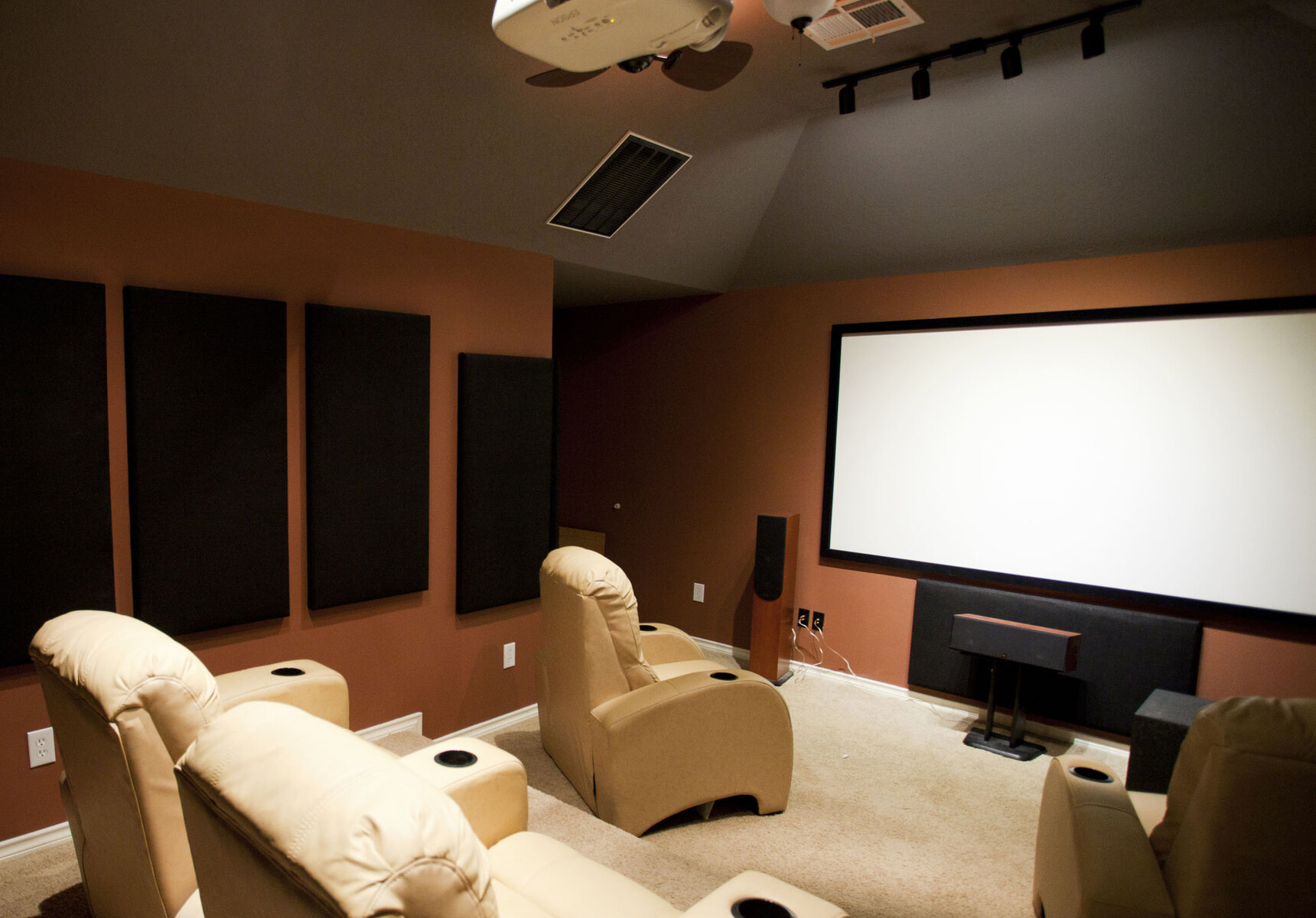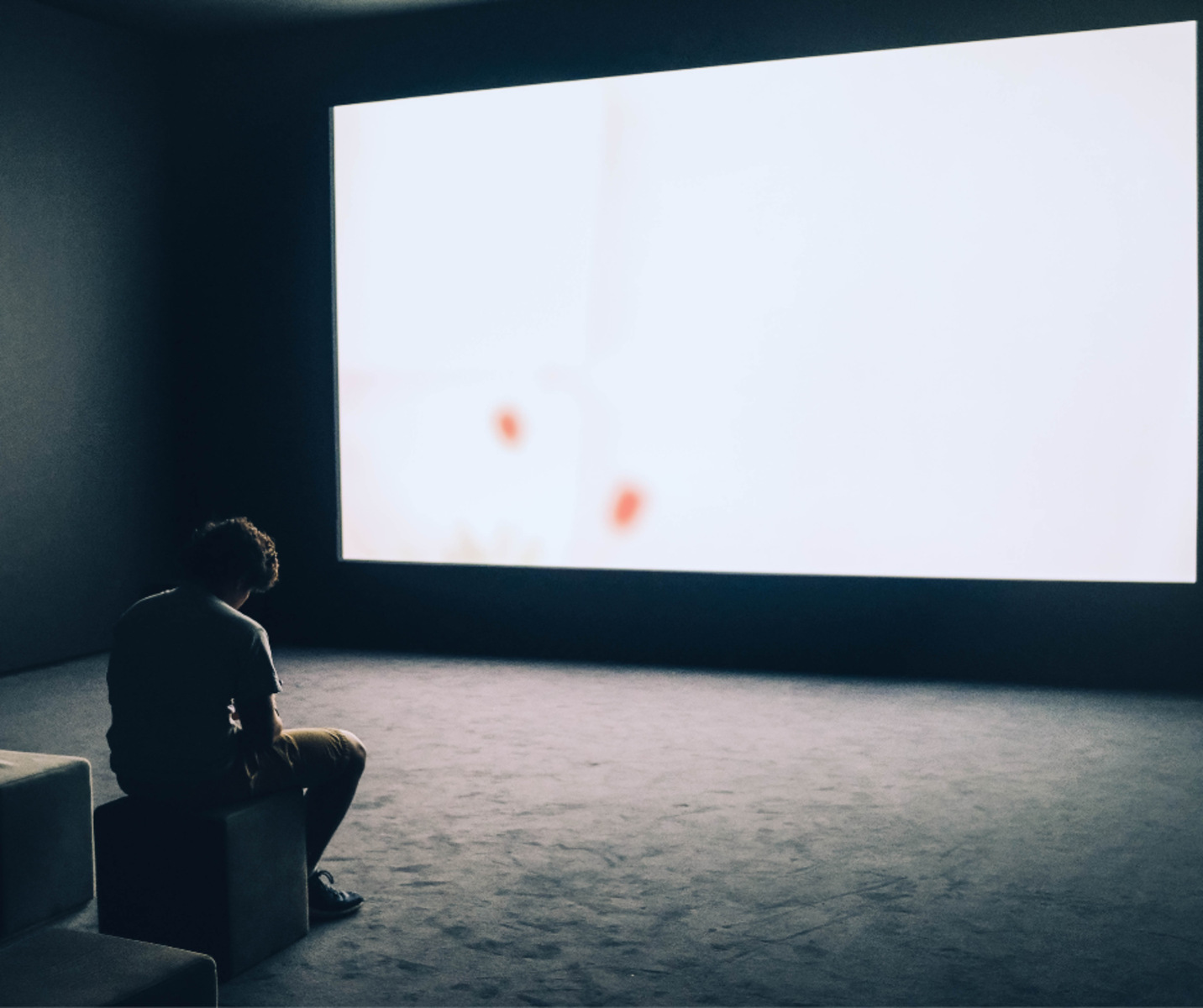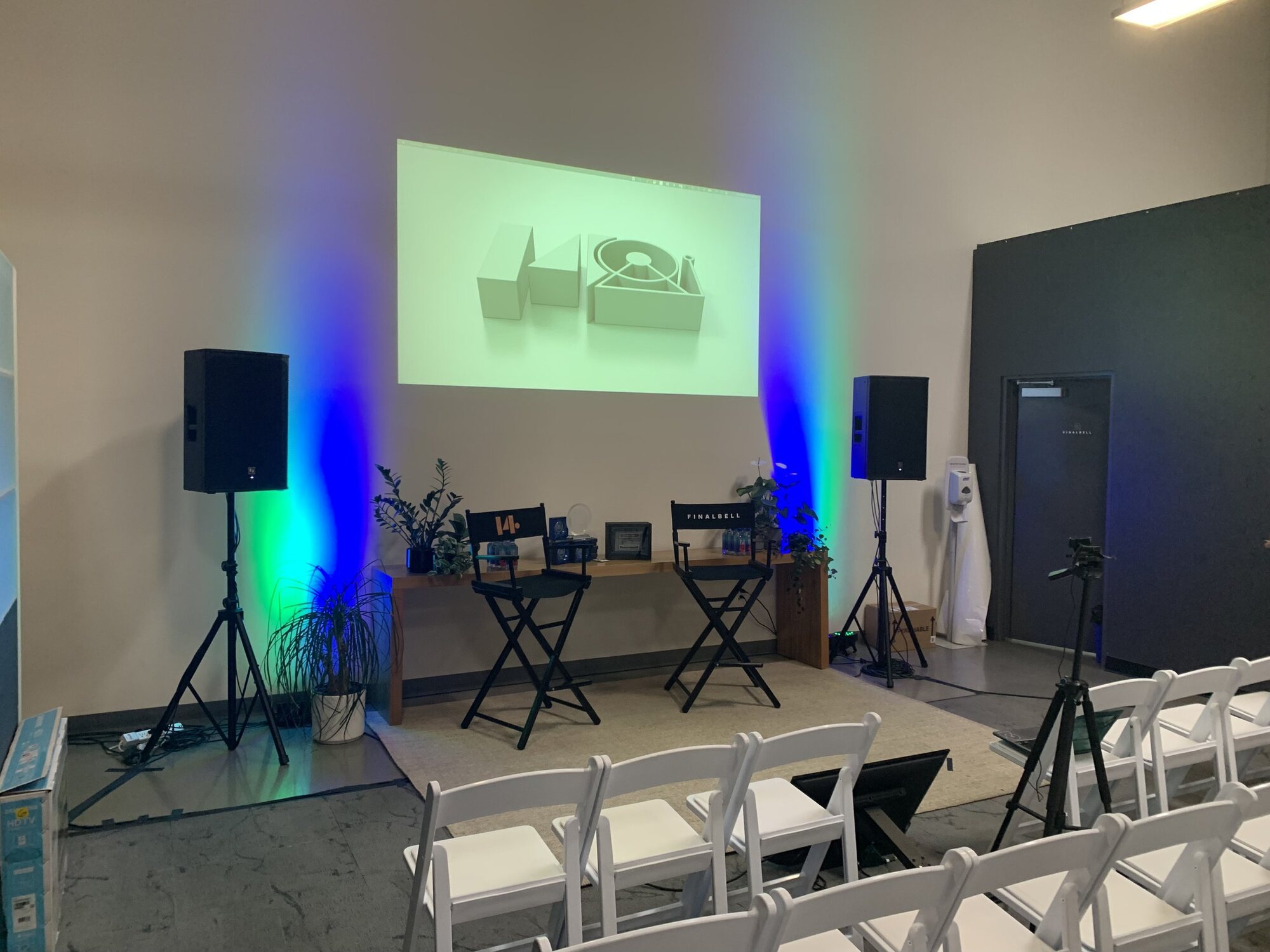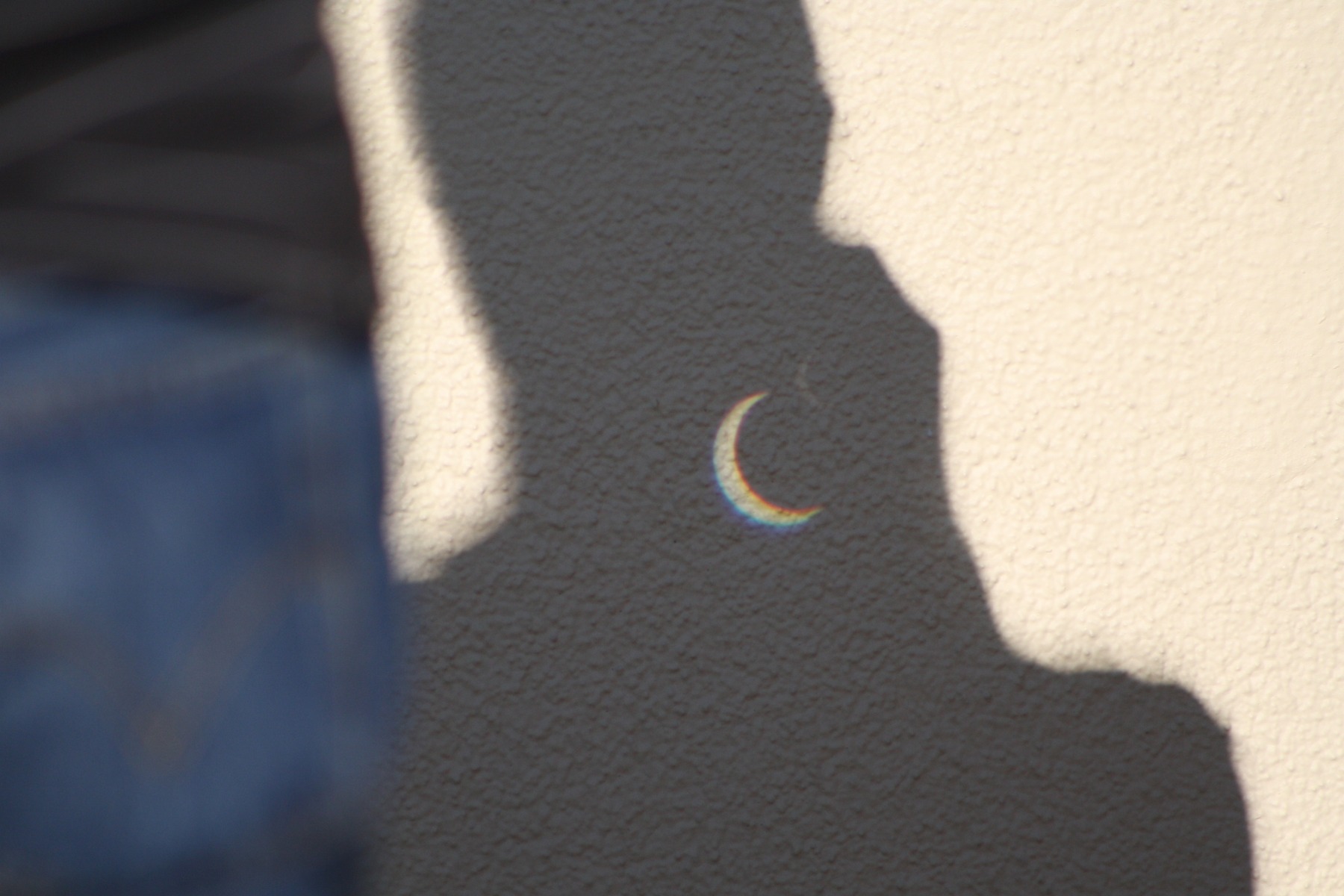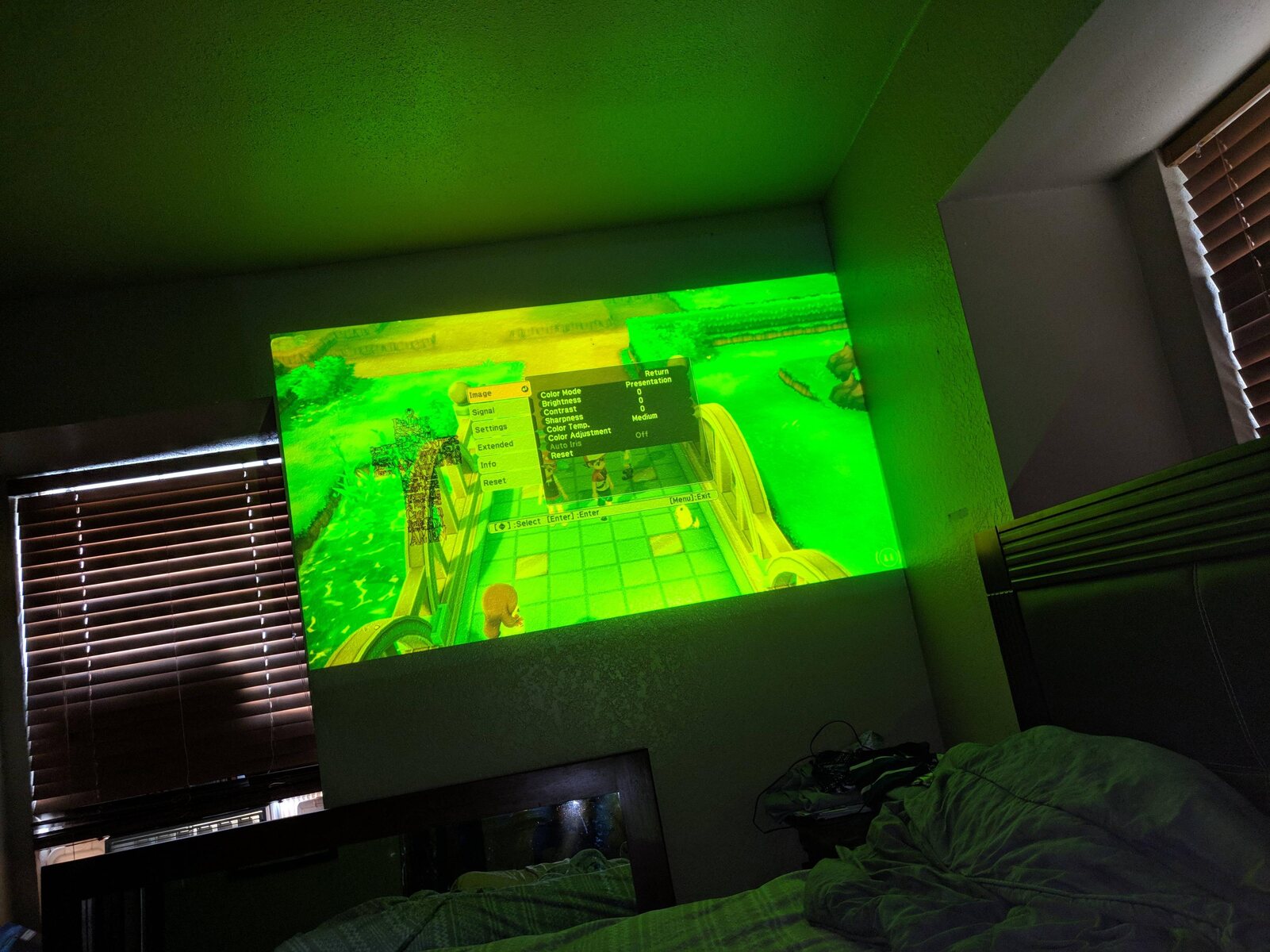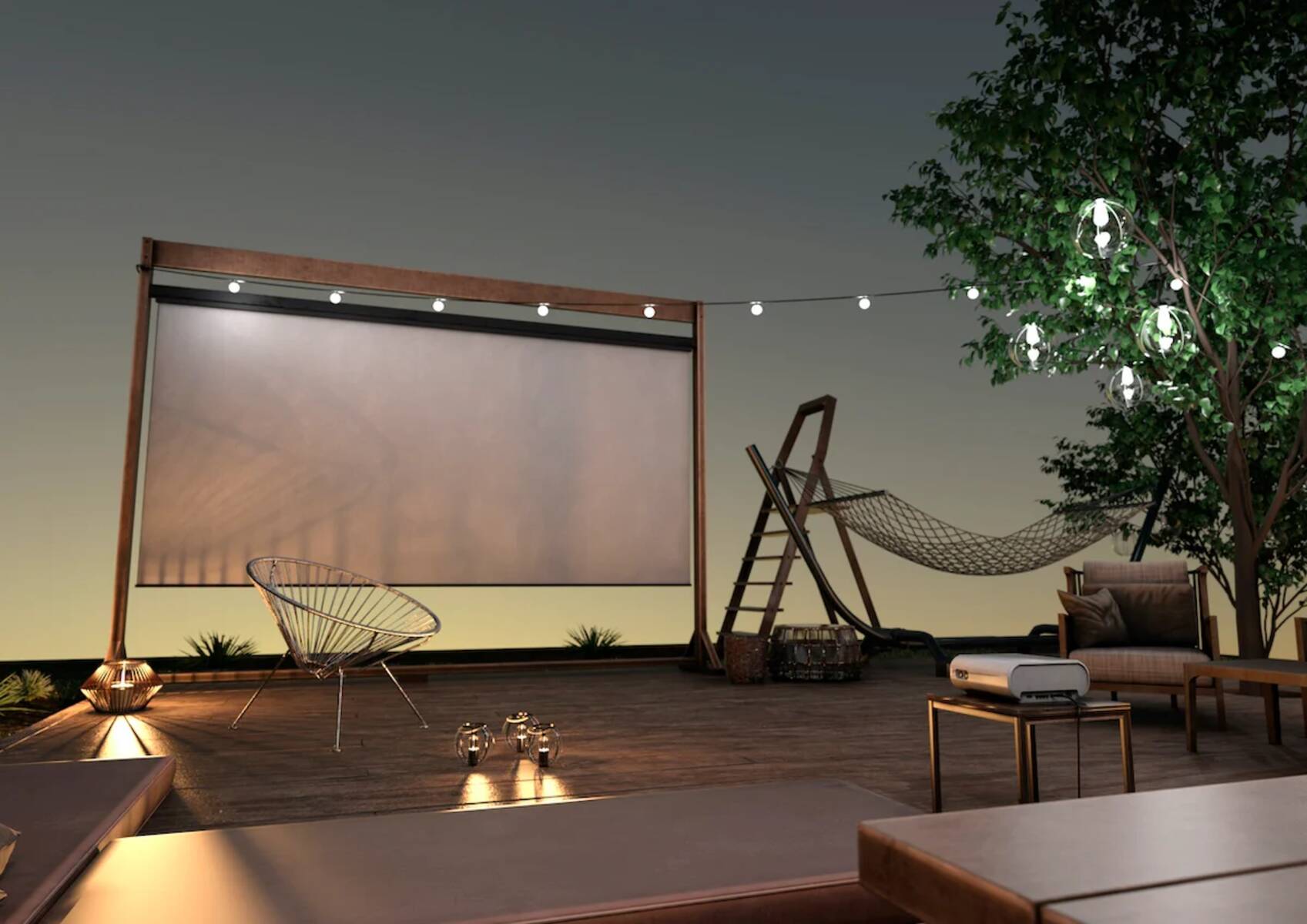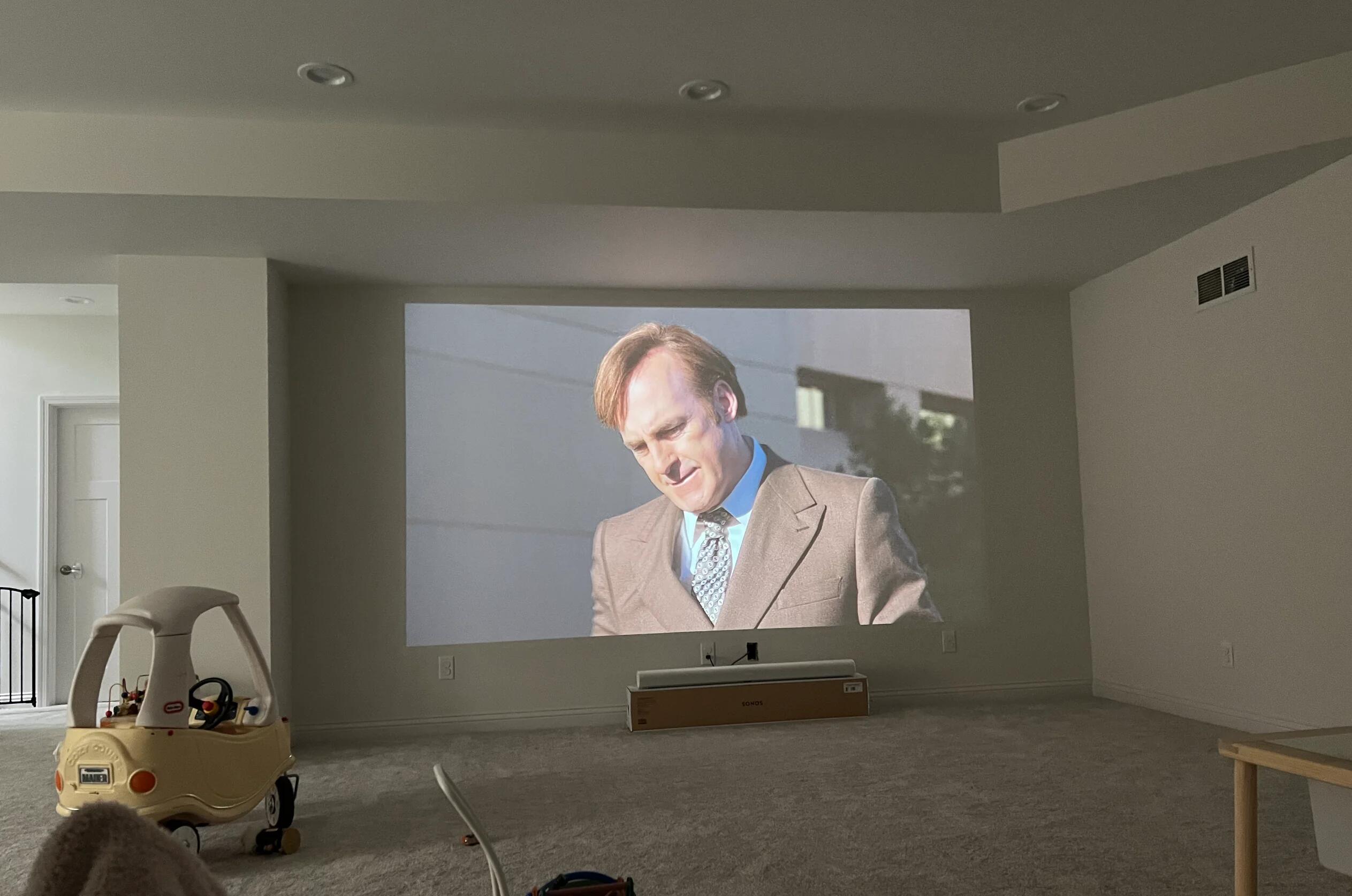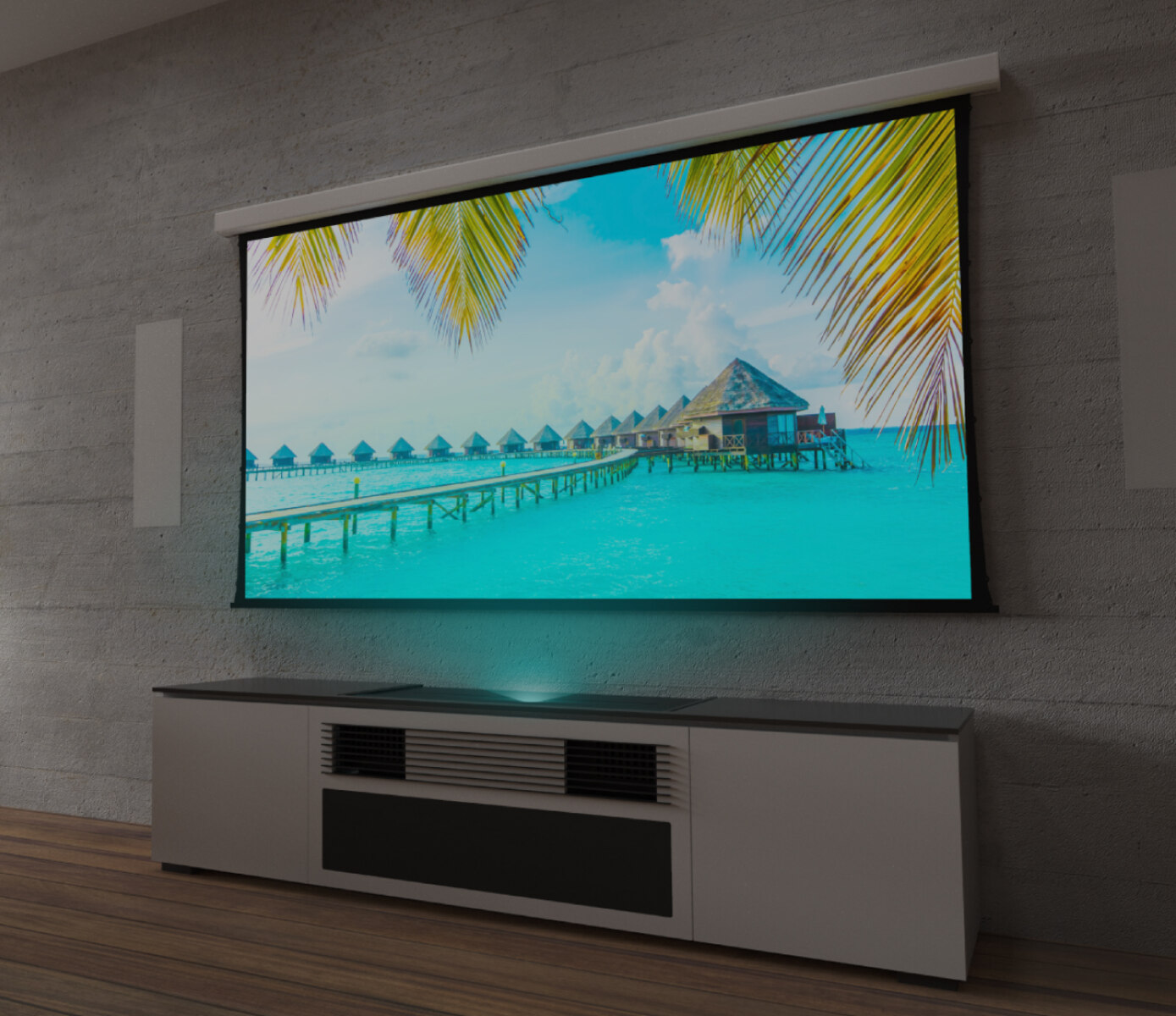Introduction
Projector screens are an essential component of any effective presentation or home theater setup. They provide a dedicated surface for projecting images and videos, allowing them to be displayed with optimal clarity and visibility. While projector screens come in various sizes and materials, one common question that often arises is, “Why are projector screens white?” In this article, we will explore the reasons behind the predominance of white projector screens and why they have become the standard choice for most applications.
When it comes to projecting images, the color of the screen plays a crucial role in determining the overall image quality. The choice of white as the predominant screen color is not arbitrary; it is based on a combination of factors that contribute to an optimal viewing experience.
Throughout this article, we will delve into various aspects that make projector screens white the preferred choice for both professional and personal use. We will discuss the impact of color accuracy, reflectivity, contrast ratio, eye comfort, and aesthetics in relation to the choice of a white screen. By understanding these factors, you will gain a deeper insight into the benefits and advantages of using white projector screens, and how they enhance the visual experience.
So, if you have ever wondered why projector screens are predominantly white, and if there are any benefits to this color choice, continue reading as we unravel the science and practicality behind it. Let’s dive in and explore the fascinating world of white projector screens, and how they contribute to creating stunning visuals for your presentations or home theater systems.
Clarity and Visibility
One of the primary reasons why projector screens are white is because white provides excellent clarity and visibility for projected images. White surfaces have a high reflecting property, allowing them to reflect light evenly across the entire screen. This even distribution of light ensures that every part of the projected image appears bright and vibrant.
White screens also help in maintaining the integrity of the colors in the projected content. When light hits a white surface, it does not absorb any specific color wavelengths, resulting in a neutral canvas that accurately reproduces the colors and details of the original content. This color accuracy is particularly important for presentations, movies, and other visual media where accuracy and detail are crucial.
Moreover, white projector screens help in overcoming ambient light interference. In a well-lit room, ambient light can cause washed-out images and reduce the overall visibility of the projected content. By using a white projector screen, the reflected light from the projector counteracts the ambient light, maintaining a high level of visibility and ensuring that the projected content appears clear and sharp.
Another advantage of white projector screens is their ability to enhance readability. White screens offer a high level of contrast with the projected content, making it easier to read text and view images, especially in environments with limited lighting. This is especially beneficial for presentations or educational settings where textual information or data needs to be clearly displayed and easily readable by the audience.
In summary, the choice of white for projector screens is driven by its ability to provide clarity, color accuracy, and visibility for projected content. The reflective properties of white surfaces ensure even light distribution, making every part of the image appear well-defined and vibrant. Additionally, white screens overcome ambient light interference and enhance readability, ensuring that the projected content is easily viewable in various lighting conditions. These factors contribute to an optimal viewing experience and make white projector screens the preferred choice for achieving clear and visible visuals in presentations and home theaters.
Color Accuracy
When it comes to projecting images, color accuracy is of utmost importance. The ability to reproduce colors faithfully and accurately ensures that the projected content retains its intended visual impact and communicates the intended message effectively. This is where white projector screens excel.
White screens provide a neutral canvas for projecting images, allowing them to accurately reproduce the colors and details of the original content. Unlike colored screens that may introduce color bias or alter the perception of colors, white screens do not distort the colors in any way. This is particularly important for applications where color precision is critical, such as graphic design, photography, and video editing.
In addition to color accuracy, white screens also maintain consistent color temperature. Color temperature refers to the perceived warmth or coolness of white light. White projector screens have a balanced color temperature, which ensures that the colors in the projected images appear natural and consistent. This is vital for creating an immersive viewing experience and accurately conveying the intended atmosphere or mood of the content.
Furthermore, white screens allow for better color calibration. Calibrating the color settings of a projector to match the white screen ensures accurate color reproduction. The color calibration process involves adjusting settings such as hue, saturation, and color temperature to achieve the desired color accuracy. With a white screen, the calibration process becomes more effective and reliable, resulting in precise and lifelike color rendering.
In summary, white projector screens offer superior color accuracy compared to screens of other colors. Their neutral nature allows them to faithfully reproduce colors and details without introducing any color bias or distortion. The consistent color temperature of white screens ensures that the projected content appears natural and consistent. Additionally, white screens facilitate effective color calibration, enabling users to adjust projector settings to match the screen and achieve optimal color accuracy. These factors make white projector screens an ideal choice for applications where color precision and faithful reproduction are essential.
Reflectivity
Reflectivity is a critical factor when it comes to projector screens, as it determines how efficiently the screen reflects light back to the viewer. White projector screens are designed to have a high level of reflectivity, ensuring an optimal viewing experience.
White screens have a reflective surface that helps to distribute light evenly across the screen. This even distribution of light ensures that the projected image appears bright and well-defined, regardless of the viewing angle. Additionally, the high reflectivity of white screens helps to enhance the overall image contrast and clarity, making the content more engaging and enjoyable to view.
Another advantage of white projector screens is their ability to maintain the integrity of the projected image. With a white screen, light is reflected back without any significant color distortion or alteration. As a result, the colors in the projected image remain true to their original form, allowing for accurate color reproduction and a more immersive viewing experience.
The reflectivity of white screens also plays a crucial role in overcoming ambient light interference. In environments with ambient light, such as meeting rooms or living rooms, the light can scatter and cause the projected image to appear less vibrant and washed out. However, the high reflectivity of white screens helps to combat ambient light by reflecting a higher percentage of projector light back to the viewer, thereby maintaining a bright and clear image.
Moreover, white screens reflect less heat compared to screens of darker colors. This is especially beneficial in home theater setups where projectors can generate heat during prolonged use. The heat reflection properties of white screens help to dissipate the heat efficiently, preventing overheating and prolonging the lifespan of the projector.
In summary, white projector screens offer high reflectivity, ensuring an even distribution of light and enhancing image clarity. The reflective surface of white screens maintains the integrity of colors and minimizes color distortion, resulting in accurate color reproduction. Additionally, white screens excel in combating ambient light and reflecting less heat, creating a more enjoyable and comfortable viewing experience. These factors make white projector screens a preferred choice for achieving optimal reflectivity and maximizing the visual quality of projected content.
Contrast Ratio
The contrast ratio is a fundamental aspect of visual quality when it comes to projector screens. It refers to the difference between the brightest and darkest parts of an image. A high contrast ratio provides greater depth and enhances the overall visual impact of the content. White projector screens are designed to optimize contrast ratios, delivering an immersive viewing experience.
White screens have a high gain factor, which means that they reflect more light back to the viewer. This increased light reflection helps to create a stark contrast between brighter and darker areas of the image. The result is a vibrant and visually appealing image with enhanced depth and detail.
The high contrast ratio offered by white screens has a significant impact on the perceived image quality. It allows for better differentiation between light and dark shades, resulting in improved image clarity and sharper details. Whether you are watching a movie or delivering a presentation, a high contrast ratio provided by a white screen ensures that the content stands out and captivates the audience.
Additionally, the combination of white screens’ high reflectivity and their ability to maintain color accuracy contributes to the optimal contrast ratio. By reflecting light evenly and accurately reproducing colors, white screens enhance the contrast between different color shades, further enhancing the visual impact and creating a more immersive viewing experience.
Furthermore, the high contrast ratio of white screens helps to mitigate the impact of ambient light. In environments with ambient light, the contrast between light and dark areas can be diminished, resulting in a less engaging viewing experience. However, white screens’ ability to reflect more light and maintain color accuracy allows for better visibility and contrast even in well-lit settings.
In summary, white projector screens excel in providing high contrast ratios, enhancing the depth and visual impact of projected content. The increased light reflection and color accuracy of white screens contribute to sharper details, improved image clarity, and a more immersive viewing experience. Additionally, the ability of white screens to mitigate the influence of ambient light ensures that the contrast between light and dark areas remains intact, even in well-lit environments. These factors make white projector screens an ideal choice for achieving optimal contrast ratios and maximizing the visual quality of projected content.
Eye Comfort
When it comes to viewing content on projector screens, eye comfort is a crucial consideration. Prolonged exposure to a screen that strains the eyes can lead to fatigue, discomfort, and even headaches. White projector screens are designed with eye comfort in mind, providing an enjoyable viewing experience.
White screens have a balanced level of brightness that is easy on the eyes. The neutral nature of white allows for comfortable viewing without causing excessive glare or harsh reflections. This makes it easier to focus on the content and reduces eye strain, especially during extended viewing sessions.
Another aspect that contributes to eye comfort is the high reflectivity of white screens. By reflecting a higher percentage of light back to the viewer, white screens ensure that the projected image appears bright and clear. This eliminates the need for the projector to produce an excessively bright image, which can be uncomfortable for the eyes. Instead, the combination of the projector’s optimal brightness and the high reflectivity of the white screen provides a comfortable viewing experience.
Moreover, the color accuracy of white projector screens plays a role in eye comfort. By accurately reproducing colors, white screens minimize the strain on the eyes that can be caused by viewing content with inaccurate color representation. Colors appear more natural and true to life on white screens, reducing eye fatigue and enhancing the overall viewing comfort.
In addition, white screens are more forgiving when it comes to displaying content with varying brightness levels. They handle gradients and transitions smoothly, ensuring that there are no sudden jumps in brightness that can strain the eyes. This smooth transition makes the viewing experience more comfortable and enjoyable.
In summary, white projector screens prioritize eye comfort by providing a balanced level of brightness and minimizing glare or harsh reflections. The high reflectivity of white screens ensures that the projected image appears bright and clear, without requiring the projector to produce excessively bright light that can strain the eyes. Additionally, the color accuracy and smooth transition of white screens contribute to a comfortable viewing experience, reducing eye fatigue and enhancing overall enjoyment. These factors make white projector screens an excellent choice for creating an eye-friendly environment for extended viewing sessions.
Aesthetics
In addition to their functional benefits, white projector screens offer aesthetic advantages that enhance the overall visual appeal of a space. The clean and minimalist look of a white screen can complement any decor style and create a sleek and modern appearance.
White screens blend seamlessly into the background, allowing the focus to remain on the projected content. This minimalistic approach avoids distractions and ensures that the audience’s attention is directed solely towards the images or videos being projected. Whether in a professional setting or a home theater, the neutral appearance of a white screen contributes to a clean and uncluttered visual environment.
Furthermore, the reflective surface of white screens can add a touch of elegance and sophistication to any space. The way the light interacts with the white screen enhances the overall ambiance, making the viewing area feel more inviting and immersive. This not only enhances the visual experience but also elevates the overall aesthetic appeal of the room.
White screens also have the advantage of versatility. They can be used in various applications and settings, ranging from conference rooms and classrooms to home theaters and entertainment areas. The neutral color of white screens ensures that they can easily complement any decor or room color scheme, making them an adaptable choice for both professional and personal use.
Additionally, white projector screens are more forgiving when it comes to displaying content with vibrant colors or intricate details. The neutral background provided by white screens allows the colors and details in the projected content to stand out without any interference. This enhances the visual impact and ensures that the viewer can fully appreciate the richness and beauty of the images or videos being projected.
In summary, white projector screens offer aesthetic benefits by adding a clean and minimalist touch to any space. Their neutral appearance allows the focus to remain on the content being projected, creating a sleek and uncluttered visual environment. The reflective surface of white screens enhances the overall ambiance and adds a touch of elegance to the room. Their versatility and ability to complement various decor styles make white screens a suitable choice for a wide range of applications. Additionally, the neutral background provided by white screens ensures that the colors and details in the projected content stand out, further enhancing the overall aesthetic appeal.
Conclusion
In conclusion, projector screens are predominantly white for several reasons. White screens offer excellent clarity and visibility, ensuring that projected images appear bright and vibrant, regardless of the viewing angle. The color accuracy of white screens allows for faithful reproduction of colors and details, enhancing the visual impact of the content. The high reflectivity of white screens contributes to optimal contrast ratios, creating a more immersive and engaging viewing experience. Additionally, white screens prioritize eye comfort by providing a balanced level of brightness and minimizing glare, reducing eye strain during extended viewing sessions.
From an aesthetic standpoint, white projector screens offer a clean and minimalist look that complements any decor style. They blend seamlessly into the background, allowing the focus to remain on the content being projected, while adding a touch of elegance to the room. The versatility of white screens makes them suitable for a wide range of applications, from professional presentations to home theaters.
In summary, white projector screens are chosen for their ability to provide optimal clarity, color accuracy, contrast ratios, and eye comfort. Their aesthetic appeal and versatility further contribute to a superior viewing experience. Whether you’re delivering a presentation or enjoying a movie night at home, a white projector screen offers the ideal canvas to showcase your content with stunning clarity and visual impact.







